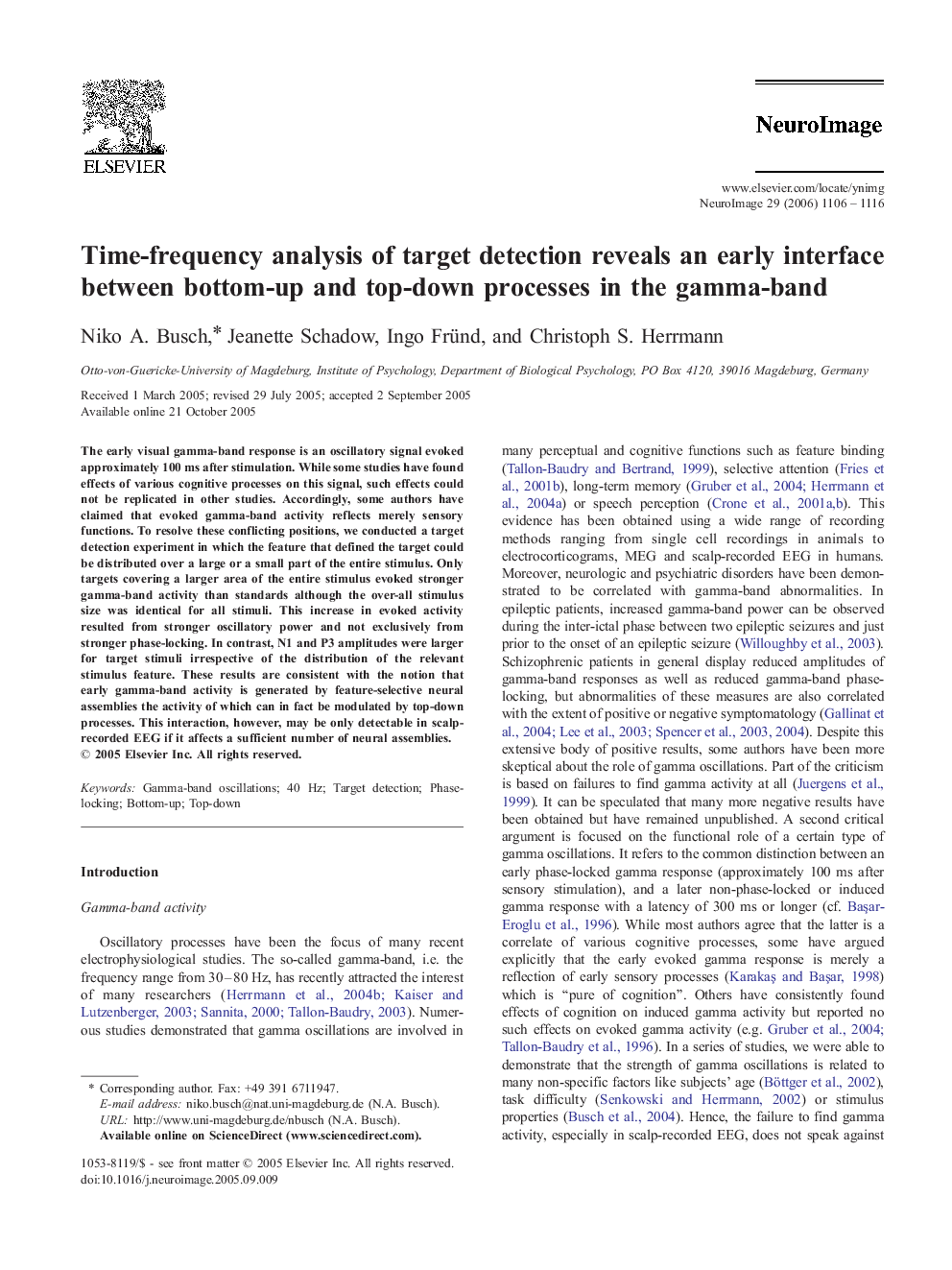| کد مقاله | کد نشریه | سال انتشار | مقاله انگلیسی | نسخه تمام متن |
|---|---|---|---|---|
| 3074647 | 1188889 | 2006 | 11 صفحه PDF | دانلود رایگان |

The early visual gamma-band response is an oscillatory signal evoked approximately 100 ms after stimulation. While some studies have found effects of various cognitive processes on this signal, such effects could not be replicated in other studies. Accordingly, some authors have claimed that evoked gamma-band activity reflects merely sensory functions. To resolve these conflicting positions, we conducted a target detection experiment in which the feature that defined the target could be distributed over a large or a small part of the entire stimulus. Only targets covering a larger area of the entire stimulus evoked stronger gamma-band activity than standards although the over-all stimulus size was identical for all stimuli. This increase in evoked activity resulted from stronger oscillatory power and not exclusively from stronger phase-locking. In contrast, N1 and P3 amplitudes were larger for target stimuli irrespective of the distribution of the relevant stimulus feature. These results are consistent with the notion that early gamma-band activity is generated by feature-selective neural assemblies the activity of which can in fact be modulated by top-down processes. This interaction, however, may be only detectable in scalp-recorded EEG if it affects a sufficient number of neural assemblies.
Journal: NeuroImage - Volume 29, Issue 4, 15 February 2006, Pages 1106–1116